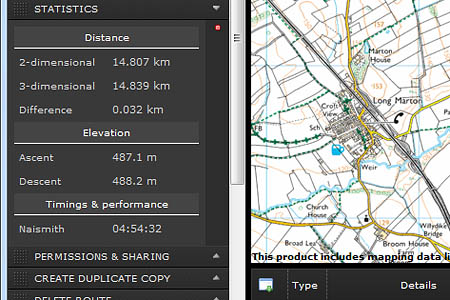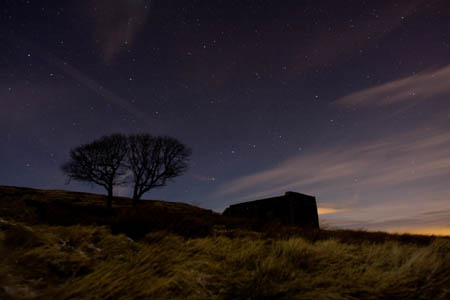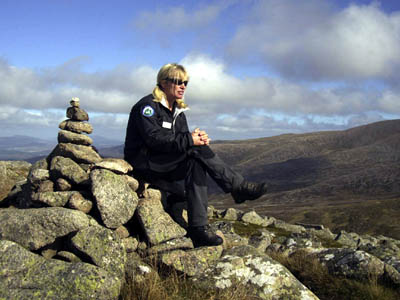Britain’s summer time officially ended at 2am on 31 October, and with it disappeared the extra hour’s daylight at the end of the afternoon.
The putting back of the clocks by an hour is the cue for walkers to put themselves into a winter frame of mind.
The warm days of June are just a distant memory or a set of photographs on a disk, and the weather is now decidedly cooler, wetter and windier and, of course, darkness will fall an hour earlier.
The advice from experts to walkers, especially those venturing on to the hills, is to go prepared, both in terms of equipment and clothing. One of the most important additions to the hillwalker’s rucksack from now on is the torch. The British Mountaineering Council said: “Mountain rescue teams have already started to report callouts to ‘no torch’ incidents. Search operations cost hundreds of pounds of money and many hours of volunteers’ time.”
On Thursday, two walkers had to be rescued from the Cuillin on Skye when darkness fell after they found their route blocked by rising water levels in the mountain burns. And earlier this month, walkers without torches had to be rescued in four separate incidents in the Lake District – and these events all happened before the clocks change.
Walkers should check sunset times before setting out. Most GPS units will give a sunset time for the location you are in, and the Langdale and Ambleside Mountain Rescue Team website has daily sunrise and sunset times for the Lake District. The farther east and north you go, the earlier sunset will be, though most of Britain will see the sun go down on Sunday some time around 4.30pm – giving only 9½ hours of daylight in early November.

Route planning systems such as grough route will give an estimated walking time using Naismith's rule
Route planning is important. Work out how long your walk is likely to take you. Many digital route-planning systems, such as our own grough route will give you an estimated time, based on Naismith’s rule, which dictates that it will take an average walker about 12 minutes to cover a kilometre. But extra time must be allowed for both ascending and descending which, in mountain areas, can lengthen the walking time considerably. Get a weather forecast for your area before you go. The Mountain Weather Information Service covers all Britain’s mountain areas. From December, avalanche forecasts will also be available online from the sportscotland Avalanche Information Service.
Rough terrain and adverse weather, such as strong headwinds, will also increase the time needed to complete a route. And it’s not against the rules to turn back if you find yourself running out of time. The summit will still be there another day.
If you do find darkness falling, try to plot your exact position using any landmarks you can still see, and plan an exit route. Be wary of following water courses as an escape route: they often follow the shortest route downhill, which may be over a large precipice!
A torch will enable the map to be read in the dark and nearby features to be seen to enable micro-navigation. Headtorches work best for walkers, enabling both hands to still be used. Use nearby targets to aim for and count your paces; most walkers take between 60 and 65 double steps in each 100m. This will help you work out how far you have come and how far the next objective is.
Watch the contour lines carefully and, if possible, stay clear of crags. It is very difficult to find a safe route through unfamiliar rocky ground at night.
Mountain Rescue England & Wales has produced an invaluable little book, Call Out Mountain Rescue?, to help you stay out of trouble on the hills. Read it before you head out.
Mountaineering Council of Scotland safety adviser Heather Morning has further advice for walkers: “Shorter daylight hours, dropping temperatures and the first dusting of snow on the hill are obvious indicators for hillwalkers to think about some extra pieces of kit in their rucksacks.
“A headtorch, and spare battery, are crucial just in case your chosen route takes a wee bit longer than expected and it is wise to check that your walking partners are carrying their torches as well.
“It’s also well worth considering putting away those lightweight, bendy summer boots and changing into a more rigid pair.
“Extra layers should be considered, with the addition of a synthetic duvet jacket and emergency shelter stored in the bottom of your rucksack just in case you are stationary on the hill for any length of time.
“Hats, gloves – I recommend at least two pairs – and face protection, such as a Buff, will all add to your comfort on the hill as we move towards the winter season.
“Finally, you will probably need to carry a bigger rucksack in winter in order to have space for those extra pieces of kit.”
The onset of winter shouldn’t mean the end of your hillwalking activities – indeed many walkers and mountaineers relish the prospect of a return to the winter conditions Britain experienced in 2009 and earlier this year. But it does mean you need to pack away your summer frame of mind, and gear up for the season.

